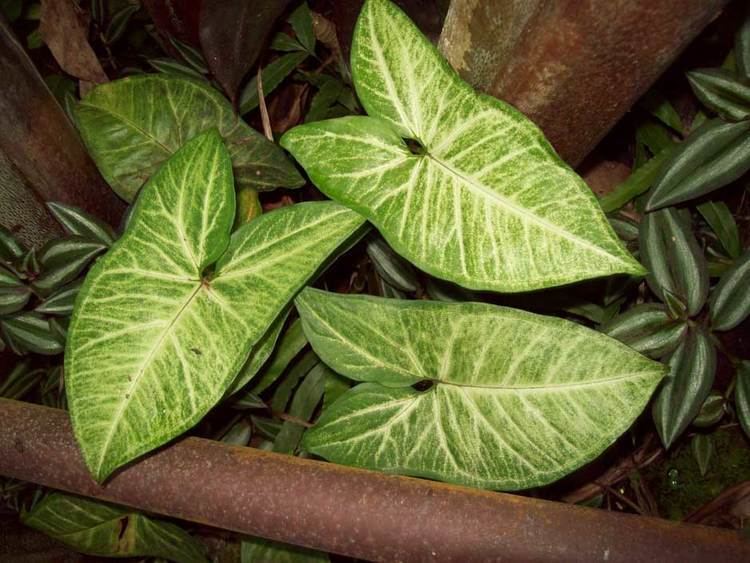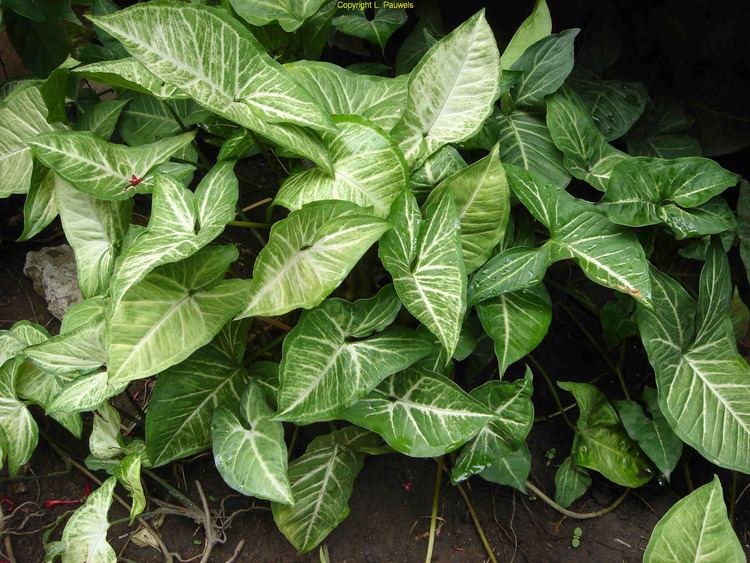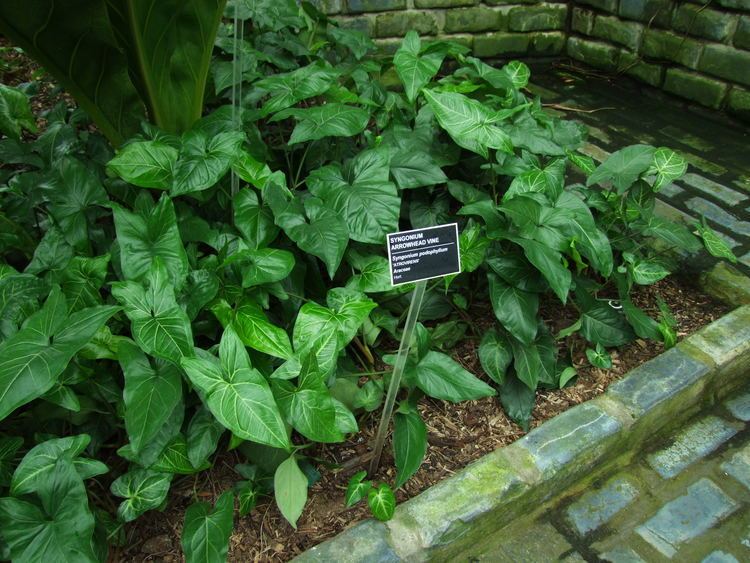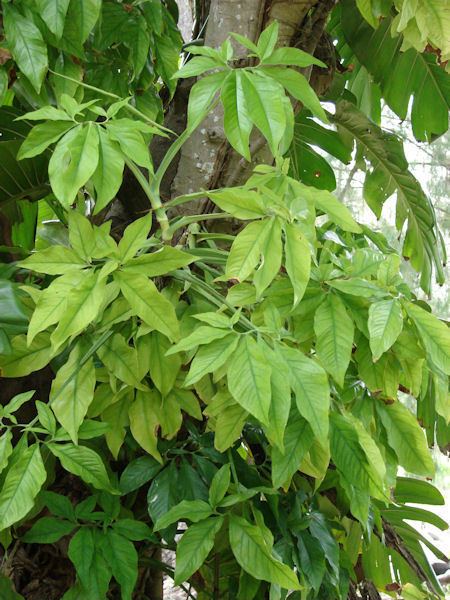Subfamily Aroideae Rank Species | Tribe Caladieae Higher classification Syngonium | |
 | ||
Similar Syngonium, Nephthytis, Philodendron, Philodendron bipinnatifidum, Chinese evergreens | ||
Syngonium podophyllum purpurtute arrowhead vine
Syngonium podophyllum is a species of aroid, and commonly cultivated as a houseplant. The species is native to a wide region of Latin America from Mexico to Bolivia, and naturalized in the West Indies, Florida, Texas, Hawaii, and other places.
Contents
- Syngonium podophyllum purpurtute arrowhead vine
- Arrowhead vine syngonium podophyllum
- Varieties
- References

Syngonium podophyllum is the most commonly cultivated species in the genus Syngonium, and is often referred to simply as syngonium. It was originally confused with the similar-looking African genus Nephthytis, and this is still used as a common name for the plant. It was given its own genus in 1879. Other common names include:

There are several variegated cultivars, the main differences being in the position and extent of the cream or white markings. Some leaves are almost entirely white, pink or yellow. All parts of the plant are poisonous and cause severe mouth pain if eaten. It is not unusual to find these growing in Sub-tropical Florida landscapes, where homeowners and yard workers need to be aware of the severe skin burning sensations caused by the plants sap containing oxalic acid and the eye damage potential from raphides .

Arrowhead vine syngonium podophyllum
Varieties
Among the wild populations, two varieties are formally recognized:

- Syngonium podophyllum var. peliocladum (Schott) Croat - Costa Rica, Panama
- Syngonium podophyllum var. podophyllum - widespread as a native from Mexico to Brazil and Bolivia, as well as Trinidad; naturalized in the West Indies (including the Cayman Islands and the Bahamas), Florida, Texas, Hawaii, Seychelles, Borneo, and Malaysia




